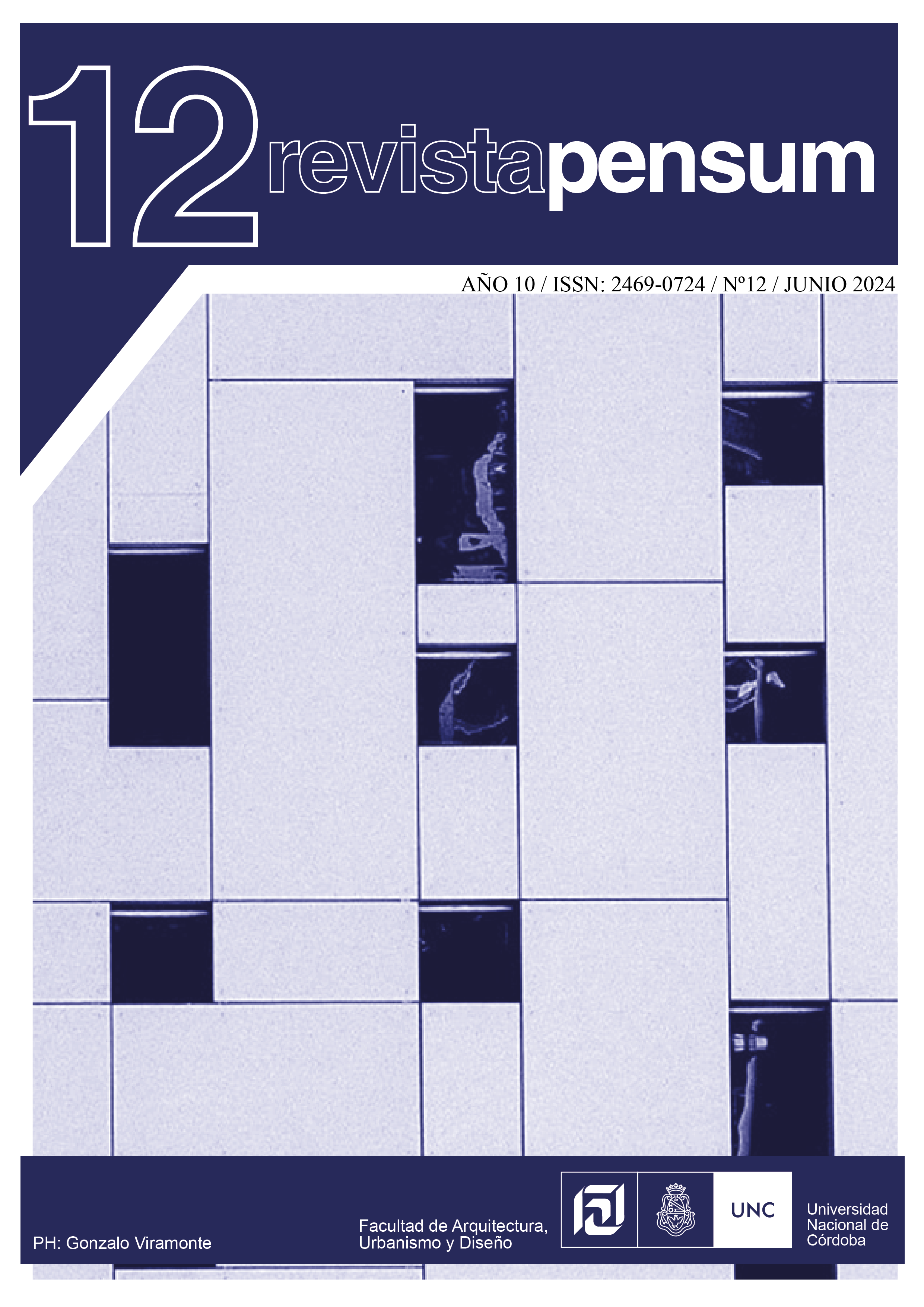Categories of analysis to evaluate technical appropriation in technological linkage projects
the case of the headquarters of the Tucuman peasant association
DOI:
https://doi.org/10.59047/2469.0724.v10.n12.42567Keywords:
light earth, earth plasters, , transmission of knowledge, learning, assimilationAbstract
In the context of technological linkage processes for habitat improvement, the co-construction of knowledge, and its appropriation, acquire fundamental relevance. This study presents the analysis of the construction of a building of the headquarters of the Tucumán Peasant Association with light earth and earthen plaster techniques. The objective of this study lies in proposing a series of implementation categories that allow evaluating the level of assimilation (or appropriation) of construction techniques. To do this, information was obtained through interviews with key actors and surveys of the participants of the activities, where their perspectives on the process, the product and the forms of organization were recorded. Four categories were proposed to characterize the process of appropriation of techniques: independence, reformulation, transmission and technical appreciation. The training of the technicians and those carried out internally among members of the association, the reformulations of the construction techniques, and their organizational capacity around construction set the tone for significant learning of new skills and assimilation of the proposed construction techniques, that return to the research team in the construction of a future research agenda.
References
Ausubel, D. (1983). Teoría del aprendizaje significativo. Fascículos de CEIF, 1, 1–10.
Boldrini, P., Malizia, M., y Rolón, G. (2020). Producción participativa del hábitat: una herramienta para la construcción del territorio y el conocimiento. Cuaderno Urbano (28), 131–154. https://doi:10.30972/crn.28284328.
Bonadeo, D. (2017). Análisis de la implementación del Programa de fortalecimiento de las oficinas de Vinculación y Transferencia Tecnológicas (OVTT) del Ministerio de Ciencia, Tecnología e Innovación productiva de Argentina, en el marco de las políticas de promoción de la innovación: el caso de la OVTT mendocina Argentec S.R.L. [Tesis de maestría]. Universidad Nacional de Quilmes.
Centeno Crespo, M., Minari, A., del Campillo, P., Rios, S., Fenoglio, V., y Peyloubet, P. (2019). Tecnología co-construida. Desarrollo de sistema constructivo en madera para Bariloche. Tecnología Co-Construida. Estructuras 2 (3-4), 60–75. https://revistas.unc.edu.ar/index.php/estructuras/article/view/27086.
Estébanez, M. E., y Korsunsky, L. (2003). Medición de actividades de vinculación y transferencia de conocimientos científicos y tecnológicos acerca del concepto de transferencia en el análisis de la relación ciencia, tecnología y sociedad. El Estado de La Ciencia. Principales Indicadores Deficiencia y Tecnología Iberoamericanos/Interamericanos 2003, 83–92. https://www.ricyt.org/wp-content/uploads/2019/09/Estado_2003_11.pdf
García Villar, G. (2019). El intercambio desde la experiencia y la práctica. el caso de encuentros de constructores con tierra de forma regional. En: Neves, C., Salcedo Gutierrez, Z. y Borges Farias, O. (Ed.) Memorias del 19° Iberoamericano de Arquitectura y Construcción con Tierra (pp. 805–815). Red PROTERRA.
Garzón, B., Auad, A., Abella, M. L., y Brañes, N. (2005). La transformación del hábitat popular desde talleres integrados de investigación acción participativa. INVI 20 (55), 121–138. https://doi.org/10.5354/0718-8358.2005.62165.
Huertas Barbosa, A., y Vanegas Arias, L. V. (2018). Investigación Acción - Creación Artística (IACA) Orientaciones metodológicas del arte para el diálogo con comunidades. [Tesis de grado]. Universidad Pedagógica Nacional Facultad de Bellas Artes Licenciatura en Artes escénicas.
López, G., Socorro, M., Mejía, C., Carlos, J., y Schmal, S. (2006). Un acercamiento al concepto de la transferencia de tecnología en las universidades y sus diferentes manifestaciones. Panorama socioeconómico 24, 70–81. https://www.redalyc.org/pdf/399/39903208.pdf.
Nonaka, I., y Takeuchi, H. (1999). La organización creadora de conocimiento. Cómo las compañías japonesas crean la dinámica de la innovación. Oxford University Press.
Peyloubet, P. (2019). La tecnología como territorio de la co-construcción del conocimiento en el campo del hábitat. Cuaderno urbano 26, 187–206. http://dx.doi.org/10.30972/crn.26263831
Pichón Riviére, E. (1999). El proceso grupal. Nueva Visión.
Ríos, S., Fenoglio, V., Centeno, J., Minari, A., Fabre, R., y Peyloubet, P. (2020). Innovación para la gestión de tecnología social (TS) en el campo del hábitat. Experiencias de desarrollo de tecnología social co-construida en San Carlos de Bariloche. Arquitecno 10, 119–126. https://doi.org/10.30972/arq.0104226.
Thomas, H., Lalouf, A. y Fressoli, M. (2008). Estudios sociales de la tecnología: ¿hay vida después del constructivismo? Redes 14 (27), 59-76. http://ridaa.unq.edu.ar/handle/20.500.11807/487.
Thomas, H., Juarez, P., y Picabea, F. (ed.) (2015). ¿Qué son las Tecnologías para la Inclusión Social? (B. Colección Tecnología y Desarrollo. Universidad Nacional de Quilmes, Bernal. https://drive.google.com/file/d/1HD16OwjSnkV2F5pnSmEfmb94QjGldaU4/view
Valeiro, A., y Biaggi, C. (2019). Revisión crítica de la evolución tecnológica de la cosecha de la caña de azúcar en la Argentina. Revista de Investigaciones Agropecuarias 45(1), 31–43. http://www.scielo.org.ar/scielo.php?script=sci_arttext&pid=S1669-23142019000100031&lng=es&tlng=es.
Vásquez Bronfman, S. (2011). Comunidades de práctica. Educar 47(1), 51–68. https://raco.cat/index.php/Educar/article/view/244622.
Villavicencio, D., y Arvanitis, R. (1994). Transferencia de tecnología y aprendizaje tecnológico. Reflexiones basadas en trabajos empíricos. El Trimestre económico 242, 257-279. file:///D:/Descargas/Transferencia_de_tecnologia_y_aprendizaje_tecnolog.pdf
Downloads
Published
Issue
Section
License
Copyright (c) 2024 Gonzalo García Villar, Pablo Dorado, Guillermo Rolón

This work is licensed under a Creative Commons Attribution-ShareAlike 4.0 International License.
Authors who publish in this journal agree to the following terms:
a. Authors retain copyright and guarantee to the journal the right to be the first publication of the work as well as licensed under a Creative Commons Attribution-ShareAlike 4 license.
b. Authors may separately establish additional agreements for non-exclusive distribution of the version of the work published in the journal (e.g., placing it in an institutional repository or publishing it in a book), with an acknowledgement of its initial publication in this journal.
c. Authors are permitted and encouraged to disseminate their work electronically (e.g., in institutional repositories or on their own website) before and during the submission process, as this may result in productive exchanges, as well as earlier and greater citation of published work (See The Effect of Open Access).
d. 4.0 International Creative Commons Attribution-ShareAlike 4.0 License.












